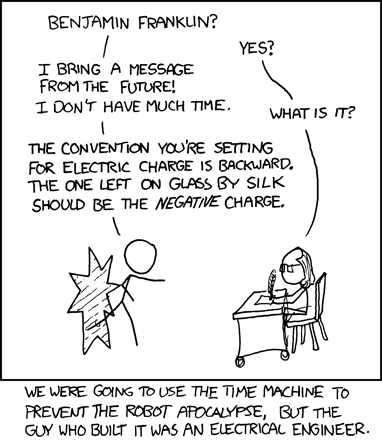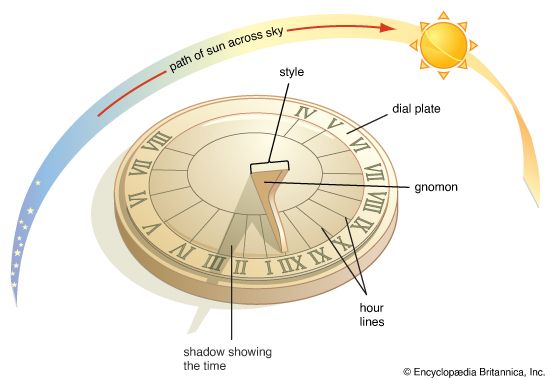Relevant XKCD:

Title text: Sure, we could stop dictators and pandemics, but we could also make the signs on every damn diagram make sense.
Well obviously the robots would be good instead of evil that way
Right, like the guy with the negatronic brain isn’t going to be evil. Come on!
test:
 e: you can link them directly
e: you can link them directly
Still not as fun as spin up/spin down quarks. Are they spinning? Not at all. And Charm quarks. What the hell does that even mean, science nerds? We also have the strange quark… aren’t they all really strange or have you just completely given up?
https://en.m.wikipedia.org/wiki/List_of_particles
The hypothetical particle names get messy, lol.
Some great names. Sneutrino, zino, wino
What in the name of waluigi is this
Sleptons just sound lazy
Negatrons and Positrons would have been so much better names
What if I told you the original selection of terms “positive” and “negative” was arbitrary?
Anyway a positively charged electron exists. It’s called a positron.
Bananas emit either a positron or an antiproton at an average of 1 every 90 minutes, IIRC. Eat your antimatter kids! The potassium is good for you.
Unrelated, but what is the origin of this image? I feel like I’ve seen it often over the years and don’t know where it came from originally.
It looks like a super genetic stock image, and I always assumed that’s what it is.
This is the oldest I could find (from 2013): https://www.dailyrecord.co.uk/news/uk-world-news/john-niven-were-living-high-2319290
explain this one to me?
In Benjamin Franklin’s experiments, he came up with the convention that we use today to define a “positive” charge. As it turns out, electrons, discovered much later, are negatively charged according to the convention. Lots of chemical and physical reactions involve electrons as charge carriers, so lots of physical phenomena have this weird opposite thing going on. E.g. electric current or “conventional current” flows in the opposite direction of electron current. Chemical reactions are also weird. Reduction reactions involve a reduction in electric charge, but gaining an electron. The model works just fine, but it can be tricky and/or annoying at times.
adding to abnorc’s excellent answer - circuit diagrams are all drawn as if charge carriers are positive (this is called “conventional current”), but because electrons are negative, this can get very confusing when you’re dealing with components where the flow of charge is one-way only (diodes, transistors, batteries, photometers…)
Benjamin Franklin’s ultimate prank
What if we just assume current flows from negative to positive?
What, and live with negativity at the heart of every atom?
You say that as if it makes less sense
this would also be society if counterclockwise and clockwise were swapped. it’s the universal way to talk about 2d rotations but pretty much nothing (except a clock) ends up turning clockwise. it didn’t have to be this way
that’s not arbitrary - the hour hand of a clock mimics the shadow of a sundial.

it makes sense, in the northern hemisphere, where 90% of people live.
so it goes the opposite direction that the earth does, great
You can get a clock that is set up counter clockwise to mess with people
Ahh! Don’t let the secret of time travel get out!
No, I think it makes sense.
Living organisms use ions internally (positive charges) because they produce something (like fruits).
Technology uses negative charges because it harvests those fruits, and takes them away (negative).
Electrons are considered positive in cars.
Oilrig
I recognise the grandstand from the Marylebone Cricket Club, but they tore down the rest of the stadium. I guess that’s a good thing?



